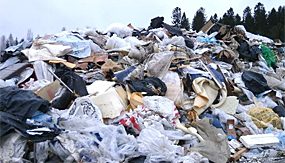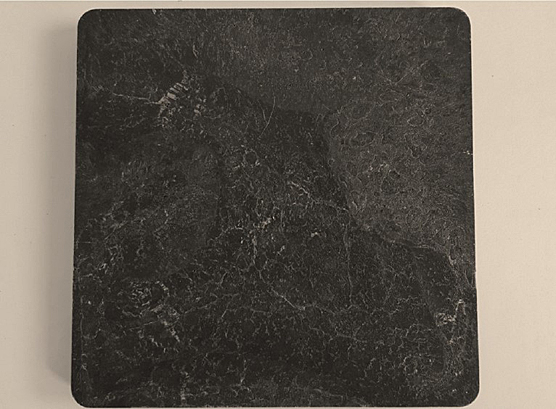
Demolition waste. © LUT University
The construction sector is Europe's biggest waste producer. In 2016, it accounted for more than a third of all waste generated. The treatment of construction and demolition waste is challenging due to its complex composition and variable quantities. However, construction and demolition waste is rich in valuable materials such as plastics, metals, wood, glass and concrete, and offers a wide range of recyclable materials, for example, for the production of various composites.
In general, a composite material is defined as a combination of two or more materials, where the materials work together but are not fused or dissolved. Reinforcing material is often a material consisting of fibres or particles that is fused to the matrix material.
For example, a wood-plastic composite consists of wood and plastic, but small amounts of other substances can also be used to influence the manufacturing process, the properties of the product or both. Among the additives, for example, various lubricants improve the resulting surface quality, and adhesives strengthen the bonds between wood and plastic, thus reinforcing the structure of the composite. Other additives used in composites include various dyes and foaming agents. The general characteristics of composites, such as tensile and bending strength, impact resistance, processability, weather resistance and dimensional stability, depend on the raw materials used, the manufacturing process and the parameters.
Waste plastic composite properties improved with additives
Composite is an environmentally friendly material, as recycled materials can also be used as raw materials for its manufacture. Composites are commonly used in outdoor applications, such as construction products, where they must withstand high humidity, repeated freezing and melting, and UV radiation from sunlight. However, a study by LUT University (Hyvärinen et al 2019) found that when mixed construction waste was used as a filler for composite, the mechanical properties and, at the same time, usability of composite material decreased.
Water absorption in the composite structure can lead to a deterioration of its mechanical properties. This mainly depends on the materials used in the composite and the coupling between them. Good and strong coupling between materials is essential for the long-term durability of the composite structure and can be improved by the use of various additives and coupling agents. A study by LUT University (Martikka & Kärki 2019) found that the mechanical properties of waste plastic composites were significantly improved by the use of coupling enhancers.

Composite material. © LUT University
Using plastic as a filler in composites reduces climate impact
Some mechanical properties, such as hardness or impact strength, can be improved by the use of mineral fillers. A recent study (Sormunen et al 2021) by LUT University compared the use of different construction and demolition waste materials - wood fibre, mineral wool, plasterboard, and plastic - as fillers in plastic composites. The comparison took into account the economic and environmental performance of the materials. The study found that, especially for plastic waste, the impact of making composites from construction and demolition waste is significantly lower than the avoided impact of their conventional disposal - incineration and landfilling.
The production of composites has great potential to mitigate climate change, given the substitution of products made from traditional plastics. The use of wood waste in the production of composites has fewer advantages than plastic waste because of the lower impact of their normal disposal.
Waste wood-based filler strengthens the structure and lowers the price of the product
Plastic waste from construction and demolition can be mixed with other construction waste to act as a filler. Recycled mineral fillers offer the possibility to stiffen recycled PE plastic for non-structural applications. The study found that the wood waste-based filler has the best structural strengthening effect when comparing the properties achieved with the weight gain. Recycled wood is also the most efficient filler material studied in terms of volume. It also reduces the cost of the product, compared to recycled PE plastic without fillers.
Composites with 60% mineral filler by weight offered the most cost-effective solution of the waste materials studied, although the price reduction achieved by mineral fillers is relatively small compared to wood filler
Read more
-
Circwaste subproject: New composite products from plastics and fiber waste
-
Hyvärinen, M., Ronkanen, M., Kärki, T., 2019. The effect of the use of construction and demolition waste on the mechanical and moisture properties of a wood-plastic composite. Compos. Struct. 210, 321–326.
-
Martikka, O., Kärki, T., 2019. Promoting Recycling of Mixed Waste Polymers in Wood-Polymer Composites Using Compatibilizers. Recycling 4.6.
-
Sormunen, P., Deviatkin, I., Horttanainen, M., Kärki, T. 2021. An evaluation of thermoplastic composite fillers derived from construction and demolition waste based on their economic and environmental characteristics. J Clean Prod 280.
More information
- Associate Professor Jouni Havukainen, LUT University, firstname.lastname@lut.fi
- Laboratory Engineer Marko Hyvärinen, LUT University, firstname.lastname@lut.fi